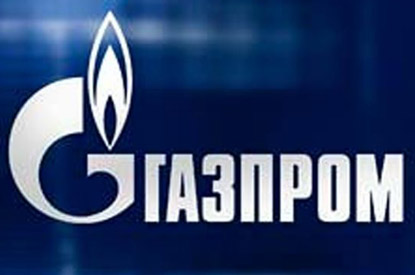
Gazprom Seduces Romania With South Stream
Publication: Eurasia Daily Monitor Volume: 7 Issue: 118
By:

On June 16 in Moscow, Gazprom CEO, Aleksei Miller, and Romanian Economy Minister, Adriean Videanu, agreed on steps to bring Romania, instead of Bulgaria, into the South Stream project; and bring Gazprom into Romania’s energy sector.
Miller and Videanu agreed on the following steps (Interfax, June 16; Ziarul Financiar, June 17; Kommersant, June 17, 18):
1. Prepare, until October 2010, the draft of an economic and technical feasibility study for building a section of the South Stream transit pipeline through Romania [instead of Bulgaria]; and provide Russia with all relevant data for a pipeline route, to be determined in Romania.
2. Draft the feasibility study for an underground gas storage site, as part of the South Stream project in Romania; and separately, draft, also by October, a feasibility study for the long-discussed gas storage site at Margineni in Romania’s north-east.
3. Create a joint company for gas exploration and production. This is believed to apply to state-controlled Romgaz company’s onshore and offshore fields; but might also be intended for a Romgaz concession in northern Iraq’s Kurdish-administered region, according to some Romanian media reports (Adevarul, June 18). Miller asked for Romanian investment commitments, and clearly identified gas buyers, as preconditions to creating an exploration and production venture with Romgaz. He showed a lack of interest in a 15 percent Romgaz minority stake, which Romania plans to float on the market (Agerpres, June 16).
Re-directing South Stream through Romania, instead of Bulgaria, would invalidate all the planning for South Stream since the project’s inception. The pipeline was supposed to run on the seabed of the Black Sea from Russia to Bulgaria; there to bifurcate, northwestward into Central Europe (bypassing Romania) and southwestward to Italy. The new version, just proposed, would run on the seabed from Russia to Romania, bypassing Bulgaria altogether. It would supposedly continue from Romania into Central Europe, and from there via Slovenia to Italy.
This stunning revision would also bypass the Russia-friendly countries of Serbia and Greece; unless Moscow agrees to lay a pipeline from Romania to Serbia and Croatia in order to reach Greece and Italy, after discarding the Bulgarian route. All these hypothetical possibilities remain unresolved. If so, there can be no question of Gazprom completing the feasibility studies for all the country sections of South Stream, and for the project in its entirety, by early 2011 as promised, let alone for a start on construction work.
Romania’s economy ministry has spearheaded an uneasy political decision in the Romanian government to explore an energy partnership with Russia. Minister Videanu has acted as the standard bearer of this policy since 2009, but it was unclear to what extent he enjoyed the backing of the Romanian president and government, themselves immersed in political infighting and electioneering. President, Traian Basescu, consistently a South Stream-skeptic until now, has not yet commented on Videanu’s June 16 agreements with Gazprom.
Gazprom had turned to Romania in the fall of 2009, after Bulgaria had suspended its participation in South Stream and other Russian energy projects, pending a review of their terms. Gazprom sought from that point onward to pressure or punish Bulgaria by preparing to re-direct South Stream through Romania. Amid general skepticism in Bucharest, a few nevertheless rose to this deceptive bait. Given the South Stream project’s lack of prospects, however, Gazprom’s leverage on Sofia through Bucharest seems equally unrealistic as Gazprom rewarding Romania for the policy shift.
The Bulgarian government confirmed those projects’ indefinite suspension in that country, in tones of finality, on June 11-13 (EDM, June 14). Videanu’s Moscow trip had already been scheduled by that time as a follow-up to his February talks with Gazprom Vice-Chairman, Aleksandr Medvedev, in Bucharest.
According to the Romanian Foreign Minister, Teodor Baconschi, the EU-backed Nabucco project remains Romania’s number one priority (Romania Libera, June 16). Other officials, however, hope to turn Romania into a European “hub” of energy transit projects: Nabucco, South Stream, AGRI, and more. “Thanks to the efforts of the Ministry of Economy, all [these] projects would run through Romania,” according to the minister himself (Agerpres, June 15). Such goals seem to take the South Stream bluff at face value and also to overlook the incompatibility (at this stage) between AGRI and Nabucco.
Bucharest’s move seems to “reset” its previous policy, which had sought to minimize dependence on Russian energy supplies or penetration of Romania’s energy sector by Russian monopolies. In passing, it also turns Bucharest into a Gazprom cudgel against Sofia. Moreover, it places Bucharest, alongside Ukrainian President, Viktor Yanukovych’s, government in a new class of believers in South Stream: Bucharest from misplaced hope, Kyiv from equally misplaced fear, given South Stream’s lack of gas resources and financing –and, now, the looming havoc in its planning.
Gazprom had offered to deliver a total of 63 billion cubic meters of gas through South Stream, without identifying gas production to meet any such commitments. It had estimated South Stream’s overall cost at nearly $30 billion, without identifying any source of funding. The company is now radically changing the project’s geography, if Gazprom’s proposals to Romania can be taken seriously at all.




